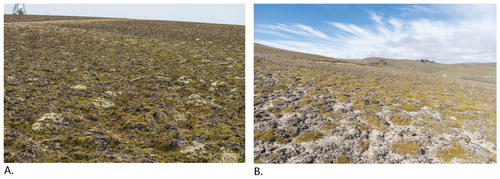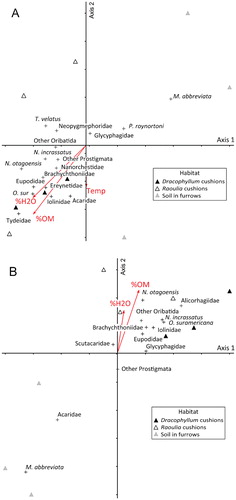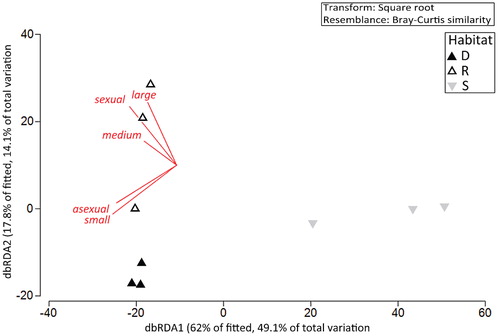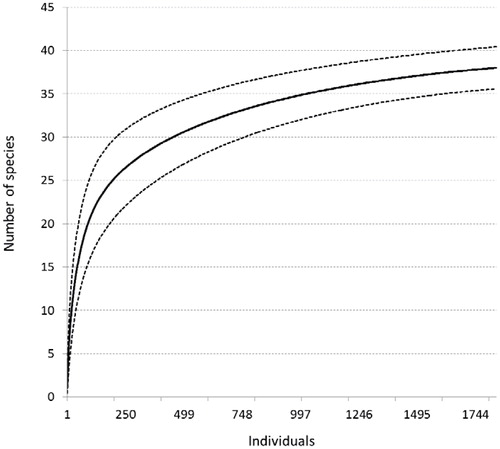Figures & data
FIGURE 1. Study sites: patterned ground landscapes with dwarf shrub cushion vegetation in the high alpine zone, New Zealand, central Otago, summer 2014. (A) Old Man's Range; (B) Pisa Range.

TABLE 1 Soil properties, microarthropod abundance (individuals per soil core*), and microarthropod species richness (species/other taxa per soil core) in alpine cushion fields, central Otago, New Zealand, February 2014. “D” = under Dracophyllum muscoides cushions; “R” = under Raoulia sp. cushions; “Furrow” = soil in furrows outside of cushion plants. Values are means ± standard error.
TABLE 2 PERMANOVA results (pseudo-F, Monte-Carlo p-values) for testing the hypotheses of no difference in microarthropod community assemblages under alpine cushion plants vs. in the surrounding soil, central Otago, New Zealand, February 2014; mixed model with cushion field (n = 3 in each mountain range) as a random effect. Values significant at p < 0.05 are in bold.
TABLE 3 Taxa with relative abundance >5% within their group, and their habitat associations, with indicator values (CitationDufrêne and Legendre, 1997) and p-values for the Monte Carlo test. Values significant at p < 0.1 are in bold.
Table
FIGURE 2. Nonmetric multidimensional scaling (NMS) ordinations for mites (Oribatida, Prostigmata, and Astigmata), and soil variables in the high alpine cushion fields, New Zealand, central Otago, summer 2014. %H2O = soil moisture content (gravimetric); %OM = soil organic matter content; Temp = soil temperature; O.sur = O. suramericana. (A) Pisa Range. DistLM best predictors of community composition: R2 = 0.12, p(%OM) = 0.007, p(%H2O) = 0.065. (B) The Remarkables. DistLM best: R2 = 0.15, p(%OM) = 0.008, p(%H20) = 0.028. See for Oribatida species.

FIGURE 3. Distance-based redundancy analysis (dbRDA) on plot means for Oribatida communities and their ecological traits (body size and reproductive type) in the alpine cushion fields in the Remarkables. Habitats: D = Dracophyllum cushions, R = Raoulia cushions, S = soil in the open ground. DistLM best predictors of community composition: R2 = 0.48, p(small) = 0.001, p(asexual) = 0.001.

FIGURE 4. Individual-based rarefaction curve for Oribatida in the Old Man's Range. The dashed lines represent 95% confidence intervals.

